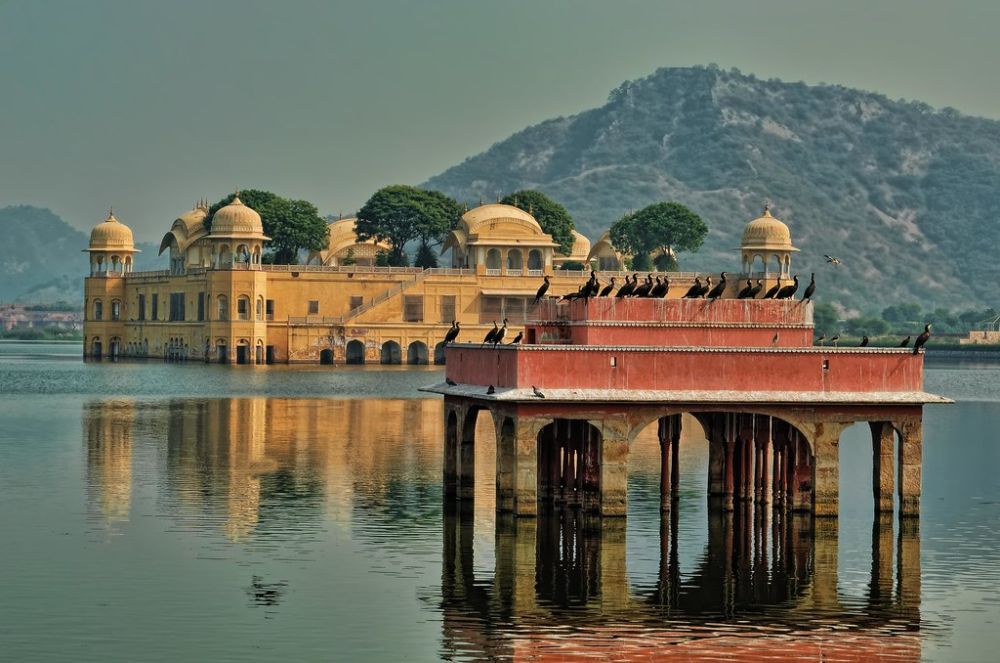

The Jal Mahal, a serene palace amidst the chaos of Jaipur, stands as an epitome of classic Rajputana architecture nestled in Man Sagar Lake. Built in the 18th century by Maharaja Madho Singh I, it was intended as a lodge for his duck hunting parties. Over the years, the palace was further beautified by subsequent rulers, including Maharaja Jai Singh II, who expanded the lake surrounding the palace.
This architectural marvel is a five-story building, out of which four floors remain underwater when the lake is full and only the top floor is exposed, creating a mesmerizing sight. Its intricate design and the ethereal reflection on the water attract tourists and photographers from around the globe. However, entry inside the palace is not permitted, as it is undergoing restoration.
Over the years, the area around Jal Mahal has developed into a tourism hub. Tourists flock to view the Water Palace and wander along the pathways surrounding the lake. The location has seen various phases of development, including restoration projects that have focused on the ecological restoration of the lake and the palace.
Only recently, with the Rajasthan government's initiatives, has Jal Mahal come into the spotlight as a cultural heritage site. Handicraft stalls, camel rides, and scenic viewpoints have enhanced the visitor experience, making it a must-visit location on the Jaipur tourism map.
Sustainable tourism is the latest trend influencing the Jal Mahal area. Efforts are being made to preserve the delicate ecosystem of the lake and to maintain the palace's structural integrity. Tourists are encouraged to appreciate its beauty from a distance to prevent damage to the site.
Additionally, light and sound shows have been proposed to showcase the history of Jal Mahal, providing an immersive cultural experience while maintaining ecological balance. Despite the limitations on physical access, Jal Mahal remains a celebrated feature of Jaipur's tourism, offering enchanting views particularly at sunrise or sunset.
The nearby Jaipur markets also greatly benefit from the palace's popularity, selling traditional Rajasthani textiles, jewelry, and art, allowing tourists to take a piece of Rajasthani culture home with them.
The Rajasthan government continues to explore opportunities to enhance the tourist experience at Jal Mahal while preserving its historical and environmental integrity. The region's future as a tourism hotbed looks promising with the continued interest in cultural heritage and sustainable travel experiences.